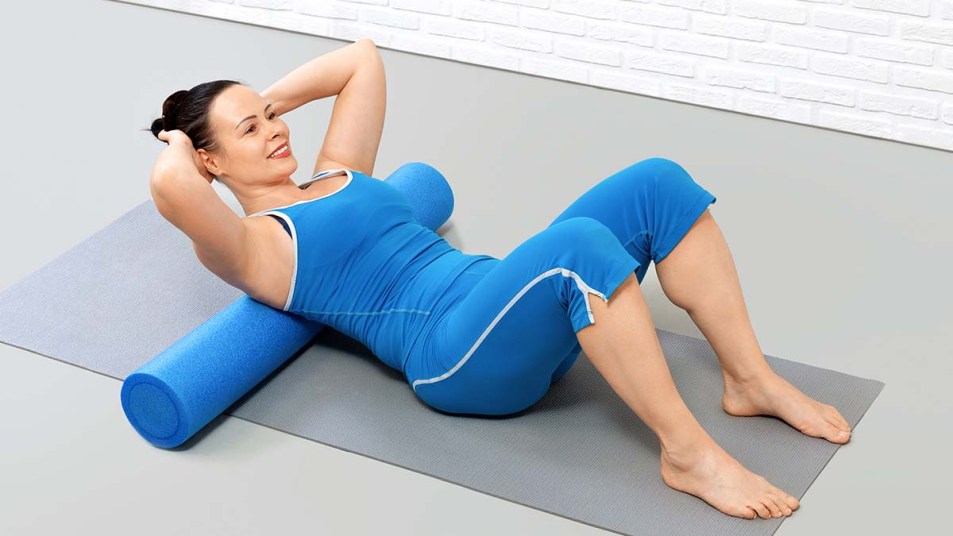How This Simple Exercise Tool Can Help Ease Your Sore Spots
Relive shoulder, leg, and knee pain naturally.

Two decades after being diagnosed with fibromyalgia, just carrying groceries would leave Lynn Julian’s, 54, whole body in agony. That is until she discovered a vibrating foam roller. This simple, inexpensive massage tool brought amazing relief as it provides a deeper massage, also increasing circulation and further reducing pain.
Today, she uses the roller every morning to help relieve stiffness. She then uses it before exercise to help loosen up her muscles and again after to help her recover more quickly. Her roller has a timer that automatically shuts it off in 15 minutes. If necessary, she’ll continue using it for a few more minutes.
“I’m back in control of my body. I can feel better whenever I need to, and my doctors are impressed with my regained strength,” says Julian.
3 Foam Roller Exercises for Pain
Here’s a step-by-step guide on properly using a foam roller to relieve calf cramps, shoulder aches, and knee pain.
Calf cramps?
If intense cramps in your calf disturb your sleep, studies show this stretch can help. Sit on the floor with your legs atop a foam roller, then use your arms to roll your calves up and down.
Knee pain?
A band of fascia that connects the knee to the hip causes pain when tight, says orthopedic surgeon Carla Stecco, MD. The fix: Lie in a plank position with your thighs on top of a foam roller. Roll your legs to the top of your kneecap and back.
Shoulder aches?
Lie back on a foam roller so it’s resting vertically under your painful shoulder. Bend your knees, plant your feet on the floor and open your arms in the shape of a goalpost, letting your elbows rest on the floor. Hold for 15 seconds.
Watch the video below to learn other shoulder pain-relieving foam roller exercises from pilates instructor Linda Mallard.
A version of this article originally appeared in our print magazine, Woman’s World.












